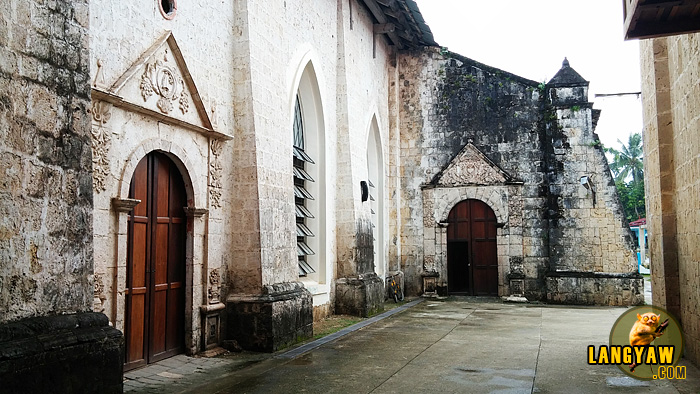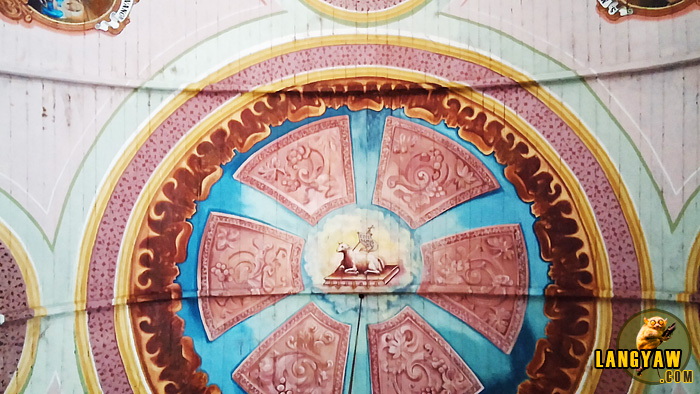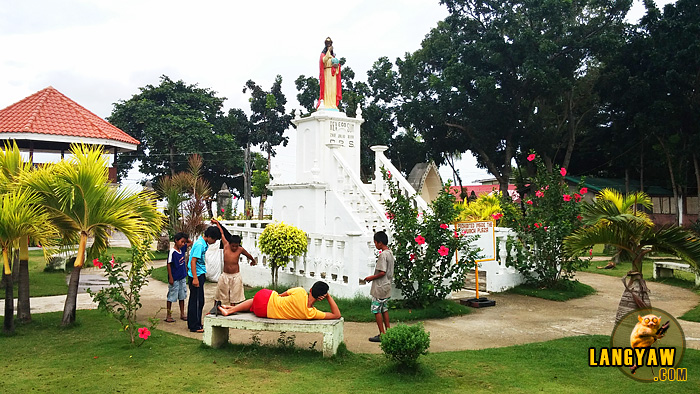
One thing that make southeastern Cebu a must visit for everyone is the assemblage of interesting heritage structures in the form of churches that are present in the center of town. These are spanish colonial era churches that have withstood the onslaught of weather and natural disasters. Stood the ravages of war as well as the whimsies of men.
It was another boring day that I decided to visit Dalaguete, 66 kilometers south of Cebu City and shoot the church. Weeks ago, a strong earthquake rocked Bohol and Cebu and several churches in Cebu were affected like the Basilica Minore del Sto. Nino, Carcar and Pardo among others. In the south, Dalaguete Church has been cordoned off as damage to the belfry is heavy, and in danger of falling down.

Dalaguete Church, dedicated to San Guillermo de Aquitania was built by the Augustinians and the present structures was started in 1802. It has a simple facade with a triangular pediment and has similarities in form to both Argao and the now destroyed church of San Nicolas. It has interesting bas relief at its facade as well as the emblem of Castilia and Leon, meaning it was built with the help of royal funds.

Once inside, the beautiful baroque retablo, both the main as well as the side altars are sure to get your attention. Antique images of saints populate the niches. These antique retablos are just one of the few surviving ones. Compared to that of Argao (now painted in gold) and Boljoon, which are stylized baroque, this one in Dalaguete is different.

As you look up, you gaze on beautiful paintings done by Canuto Avila, a popular church ceiling painter together with Rey Francia who were responsible for the 1920-30s ceiling paintings still present in southern Cebu and Bohol. Here, images of heaven, angels, the sacraments and several religious symbolism fill every nook and cranny.

Infront of the kumbento is a playground. There are also centuries old acacia trees and a 50s Cristo Rey (Christ the King) monument. It’s windy and cool as breeze from the sea comes in. Then you just sit on the cement benches and gaze at the church as well as the old kumbento.

During the middle of the 18th till the middle of the 19th centuries, the Muslim slave raiding was quite rampant and southern Cebu was one of the routes during the habagat (monsoon) season. And it was because of this that Fray Bermejo, parish priest of Boljoon in the 19th century made a series of telegraphic watchtowers and Dalaguete has several of these including one infront of the church.
Thanx to LG for loaning me the beautiful LG G2 for review purposes. All images in this post were taken with this device. It’s a very handy and intelligent smartphone that one can carry around while traveling. Images above were shot as is and then edited slightly for additional contrast and saturation as well as adjusting for a straight horizon.
When I see old baroque churches like this, my heart goes out to the churches damaged in Bohol and Cebu. Really makes me Sad. I hope they can be rebuilt.